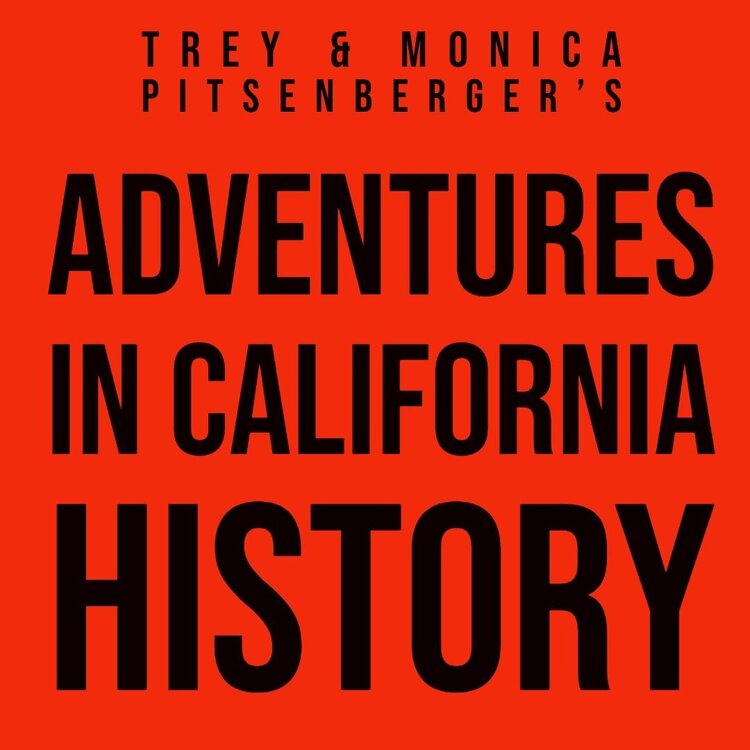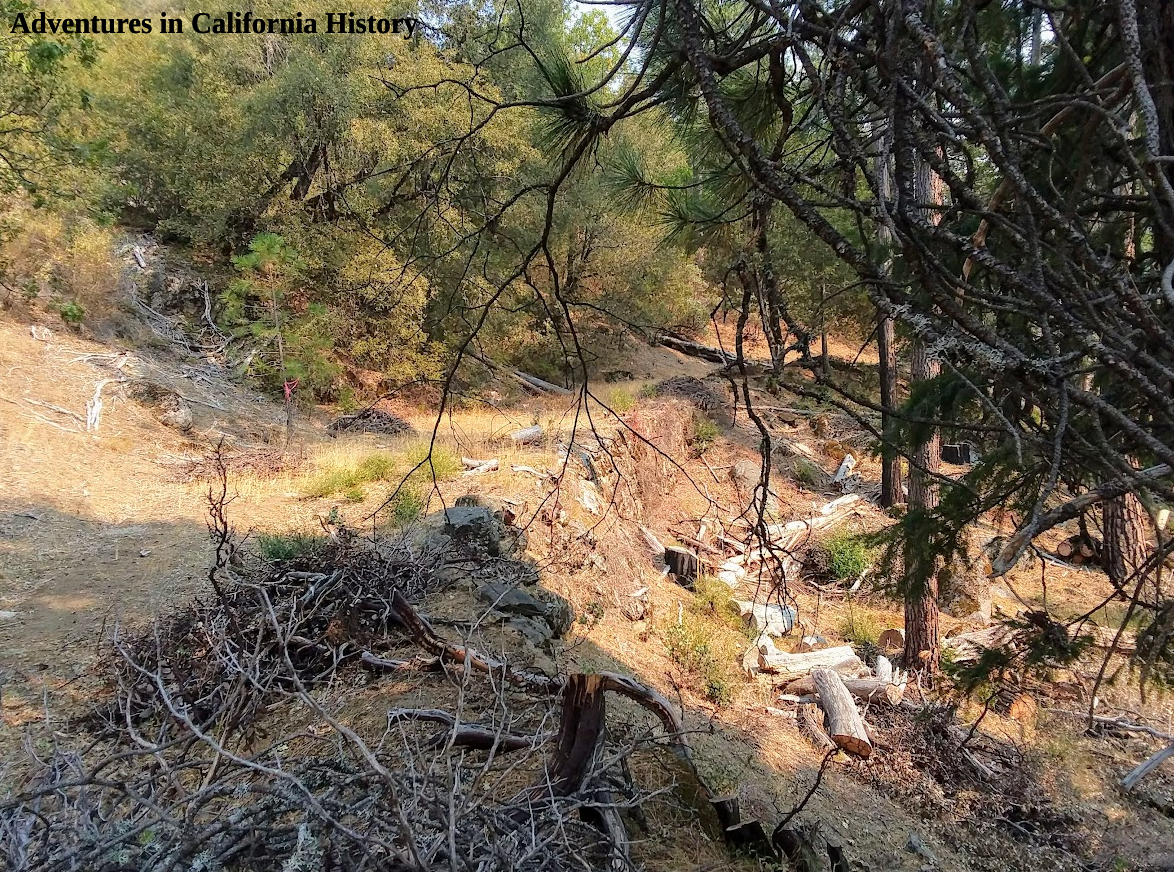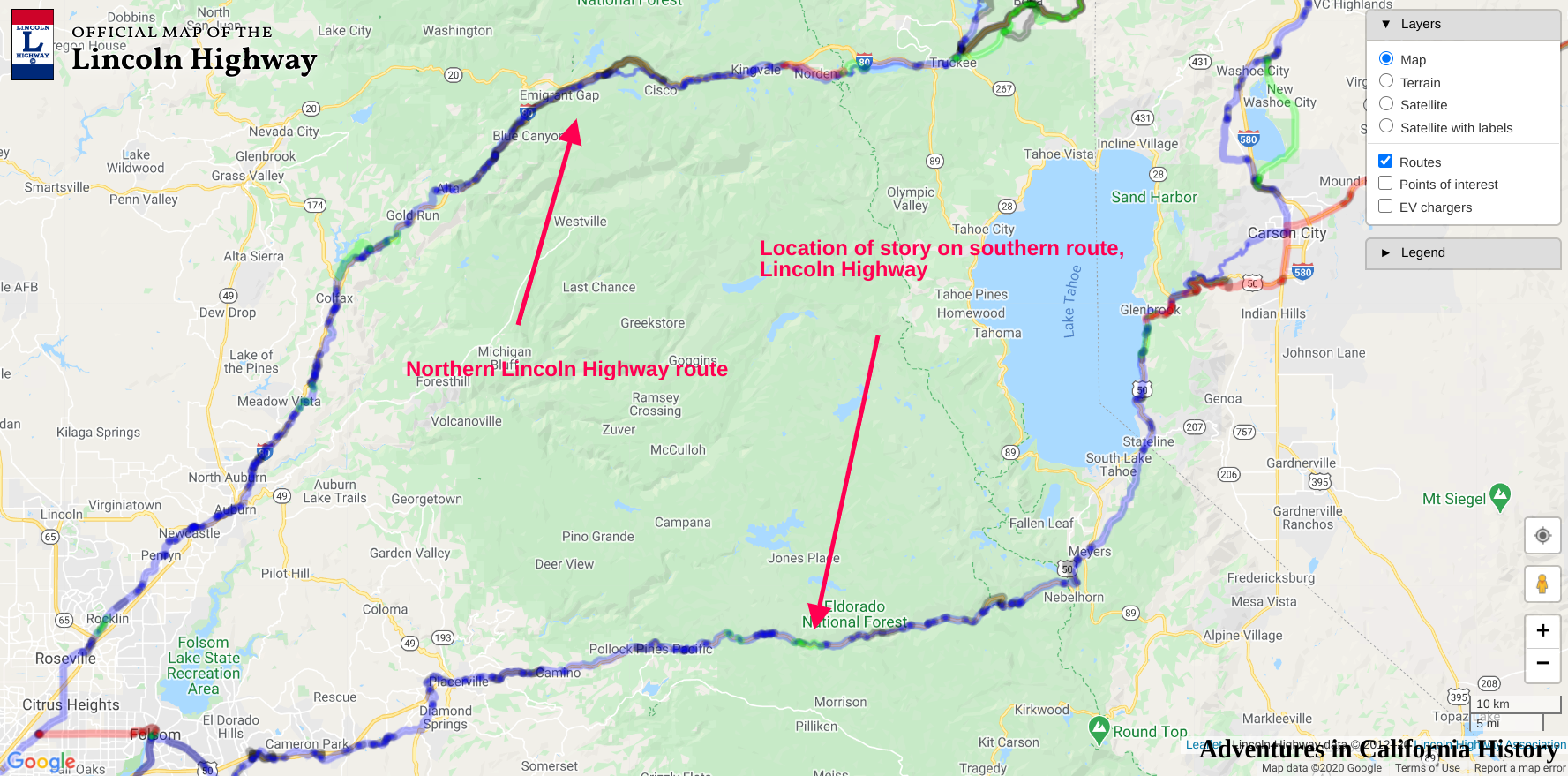Tuesday found Monica and I venturing into the Eldorado National Forest, searching the Lincoln Highway's old southern route between Fry Creek and Milestone 29. This is a fantastic section of old roadbed that has, for years, been buried under an accumulation of forest debris and erosion. We hiked this portion before, but the road/trail was blocked by manzanita and other plants, making it nearly impossible to travel farther.
Great news, as the forest has been cleared for fire prevention. All the growth that had hindered our progress has been removed, making for an easy hike. Most exciting is many hundreds of yards of rock retaining wall has now been exposed after over 100 years. Let's take a walk and we’ll show you what we have found.
Iron piece on the west side of Fry Creek.
In the photo above, I’m looking at one of the first objects we found, a California “C” Monument, which was used to designate the state’s road boundaries. What is fascinating is there is no “C” printed on the block. There is only one other time we have found these markers with no letter “C” embedded in it. The marker indicates that our official map may be changed to show this previously unknown loop of the old road.
A hundred yards or so from the “C” Monument, the old road crossed Fry Creek. The only evidence of a bridge is iron sticking out of the granite on the west side, and a retaining wall on the east side.
The photo above shows the small retaining wall, on the opposite side from the iron piece, hidden behind some bushes. The photo below shows the site looking west accross Fry Creek. There must have been a bridge here.
The photo below shows the road just a few hundred yards east of Fry Creek, where we came upon this beautiful stone retaining wall. We don't know the year these walls we built. The Lincoln Highway was designated in 1913, but this road is older than that. This was California’s first wagon road, designated in 1895, predating the automobile, so the walls could have been built during the 19th Century.
The photo below shows some of the clearings that have exposed this long retaining wall. We were quite impressed with the length and height of some of these walls. Truly expert craftsmanship to have withstood over 100 years of neglect.
Below we see one of the longer walls and the piles of manzanita that have been cleared. This wall was completely hidden from view before this recent clearing. Below is one of the longer retaining walls we came upon. Notice the piles of manzanita bushes that have been cut out, exposing this once hidden wall.
A little further on, we came upon a stream crossing and a terra cotta pipe passing under the roadbed. We have seen rock and metal culverts before, but never terra cotta or clay. Quite unusual.
Monica is holding a portion of the clay pipe we found laying around. It’s quite thick and heavy.
Still, further on, we came upon a stream crossing and another terra cotta pipe passing under the roadbed. In the photo below, we have walked a bit further east and found another pipe. Check out the size of that Terra Cotta pipe emerging from under the roadbed. It was in such good condition we wondered if it was a recent replacement. Nothing else has been repaired along this stretch of Lincoln Highway, so we assume this is an original culvert. Why clay was used in this particular situation, we do not know.
Below is a photo closeup of the pipes double-layered construction. The outer white layer is quite hard. Not sure what type of material it’s made from.
We are just about through with our hike and we can see Monica walking east on the old road towards our destination, Milestone 29 off Highway 50.
With the recent clearing having been done this stretch of the historic road is easily hiked. The retaining walls are extensive and easily spotted now with the clearing. Lot’s of bear scat around so it’s best to walk this during the daylight before dusk, lest one come upon a furrier traveler on the old road.
Monica heading east near Milestone 29.
Below is a map showing the location of our adventure. We started near Fry Creek at the left and followed the blue line towards Milestone 29 on the right. Very little of this section of the old road is visible from Highway 50.
Below is a map showing the two routes of the Lincoln Highway through the mountains of California. Our adventure this time is on the southern route in El Dorado County.




























